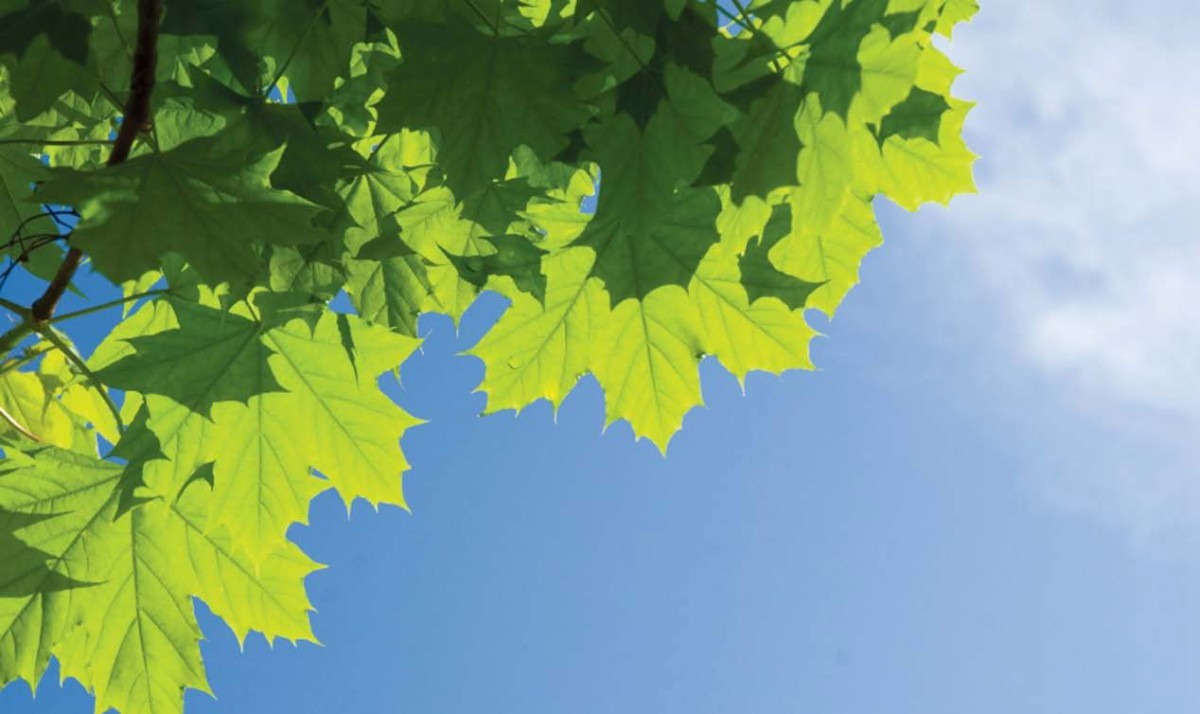Everybody knows that tree species vary in their ability to tolerate shade. It’s easy to find shady places in the woods where shade-tolerant species such as American beech and eastern hemlock outcompete shade-intolerant species such as quaking aspen and paper birch. Or picture an old field where pine trees still overtop maples. It’s a question of light. But what’s less well known is that similar differences also exist among the leaves on any one tree. Leaves growing in shade deep inside a tree’s crown (they’re called shade leaves) differ in look and behavior from their counterparts (sun leaves) growing on the exposed surfaces of the tree’s crown.
While it is true that many factors influence the appearance and workings of a leaf, from hungry insects to harsh weather, the influence of light – and its absence – is paramount. Walk through any forest on a sunny day, and in no time you will observe a countless variety of light conditions. Some are obvious: a warm and bright opening here or some damp and dark shade there. Others are more subtle and may be fleeting with time. You can watch shafts of slanting light moving through the woods – not only as the day passes but also with even the slightest breeze or passing clouds. Still other changes in light go completely unnoticed by the human eye. But rest assured that all of these various and changing light conditions are indeed noticed by the trees, which make the most of all the light that enters the forest – even the dim light that makes it to the shrub and ground levels of the canopy and within the branches of individual trees.
Shade leaves growing from interior and lower branches of a tree are usually thinner but larger – often many times larger – than sun leaves. The larger surface area allows a shade leaf to capture more of the dim light filtering in through the leaves above. The thinness of shade leaves allows what little weak light does reach them to penetrate into the photosynthetic cells inside. Conversely, sun leaves are built to take better advantage of full light. Because the full light they receive can penetrate deeper, sun leaves tend to be thicker and have more layers of photosynthetic cells. All that light has a down side: it can overheat and dry out a leaf. So sun leaves are smaller, which limits their losses under dry, desiccating conditions, and they tend to have more protective hairs and waxy surface coatings than do shade leaves. To a shade leaf, those coatings would only serve to add more shade, and they have less need for protection.
But it’s not just appearance. Sun leaves and shade leaves act differently, too. Leaves that emerge from budbreak into full sunlight tend to align themselves vertically, nearly parallel to the incoming sun rays. This orientation minimizes overheating and water loss, but because there is so much light available to sun leaves, it does not significantly reduce their ability to photosynthesize. Interior leaves, or shade leaves, on the other hand, typically hang from the branch in a horizontal fashion, more parallel with the ground, to maximize their exposure to incoming sun rays. It is said that for most species these leaf orientations are fixed; they do not change with changes in light conditions. However, there are a few species, such as some dry-site oaks, that can and do adjust leaf angle as the sun moves during the day. The smart money says others do it, too.
We know that sun leaves certainly do better in full light and that shade leaves are far more efficient under low light. But this isn’t about one being better than the other. It is about the tree as a whole. These differences are the tree’s deft response to its varied light environment; they optimize photosynthesis for the growth of the whole plant. This is extremely important for the tree because it is surrounded by other trees doing just the same thing. So, although the photosynthetic contribution made by shade leaves probably doesn’t add much to the height or diameter growth of the tree’s stem, it just might be enough to keep the tree in the game. Indeed, it may very well be the contribution of their shade leaves that allows shade-tolerant trees to survive low light conditions, which in turn has far-reaching implications for a stand’s species composition and the way it responds to management or natural disturbances.


